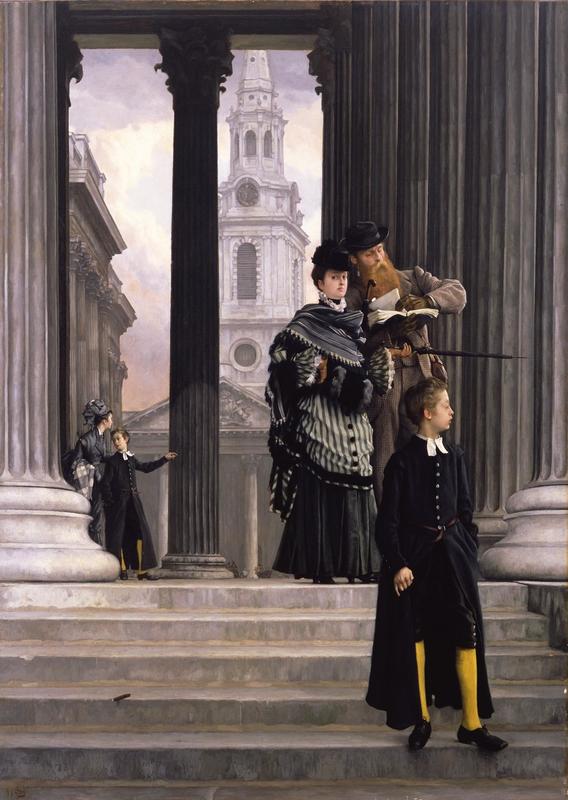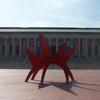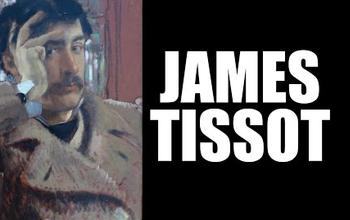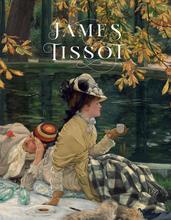More about London Visitors
- All
- Info
- Video
- Shop

Contributor
James Tissot’s London Visitors might resemble the holiday photographs you sent back home to mum and dad.
Not the ones at the bar, drunkenly singing along to your karaoke song. Those are saved for friends.
James Tissot became an expat in the 1870s because Paris was a-rockin’ with civil unrest. Tissot spurned out paintings of scenes of Victorian upper-middle classes as a respite from the memories of the Franco-Prussian war. During his stint as a soldier, Tissot witnessed plenty of suffering. The artist landed in London with the idea of making money there, already having been an established artist in France. He’d shown paintings at the Paris Salon alongside Edouard Manet and Edgar Degas. In London, Tissot took refuge with his friend Thomas Gibson Bowels in Hyde Park.
In London Visitors, a couple stands on the portico of the National Gallery in Trafalgar Square. While her male companion considers a map, the woman looks straight at the viewer. Their bodies clad in layers of dark clothing are striking against the bone-white buildings that dominate London, the depiction of which here show Tissot's admiration for architecture. Let it be known that the French artist considered architecture as a career before settling on painting.
Tissot deliberately chose to paint the British National Gallery, with the intention of selling these images of well-known locations the British loved back to them, images shown through a foreigner’s eyes. An 1874 exhibition of the painting shot down those good intentions. London Visitors was panned by critics. Why? Tissot’s artistic liberties with the truth ruffled feathers. Tissot photoshopped the city structure – well, the 19th century version of photoshop. He sliced it up to show more. From where the viewer is positioned, the church of St. Martin-in-the-Fields colonnade should barely be seen but is, instead, painted completely clearly. Tissot wanted to reveal more of London's beauty than could be appreciated in real life, but the critics’ outcry was pretty much this: leave London buildings alone!
London Visitors remains a refreshing breath from the scenes Tissot was painting whilst in France. Take a look at his 1870 painting The Wounded Soldier, showing one of the 100,000 causalities of the Franco-Prussian war. Chaos worsened when the French government failed to protect its people, giving way to a Prussian siege. There was hope that, if placed in power, the radical Paris Commune would protect the people from Prussia, since the French government failed to do so. However, after holding power from 18th March to 28th May 1871, the French Army retook the city. And, well, that’s just no place for a painter to be.
Tissot was instead in London, earning big bank from wealthy English patrons. He stayed on in England for another decade, while others of his fellow French painters returned home much sooner.
Sources
- Apollo Magazine. “James Tissot: Fashion and Faith,” October 12, 2019. https://www.apollo-magazine.com/art-diary/james-tissot-fashion-and-fait…
- BWW News Desk, “Intimate Details: Prints by James Tissot Opens October 5 at Zimmerli Art Museum,” Broadway World, September 30, 2019. Accessed October 26, 2019. https://www.broadwayworld.com/new-jersey/article/Intimate-Details-Print…
- Country Life, “How the French impressionists came to fall in love with London,” October 17, 2017. https://www.countrylife.co.uk/luxury/art-and-antiques/french-impression…
- Janvrin, Isabelle, Rawlinson, Catherine, The French in London: From William the Conqueror to Charles de Gaulle, London: Wilmington Square Books, 2016.
- Marshall, Nancy Rose, Warner, Malcolm, James Tissot: Victorian Life, Modern Love. London: Yale University Press, 1999.
- Nelsson, Richard, “The Paris Commune – fromt eh archive, 1871,” The Guardian, June 26, 2019. Accessed October 26, 2019. https://www.theguardian.com/world/from-the-archive-blog/2019/jun/26/the…
- Williamson, Amelia, “A Visitor’s Eye: Tissot’s Depictions of London Life,” Sothebys, November 24, 2019. https://www.sothebys.com/en/articles/a-visitors-eye-tissots-depictions-…













